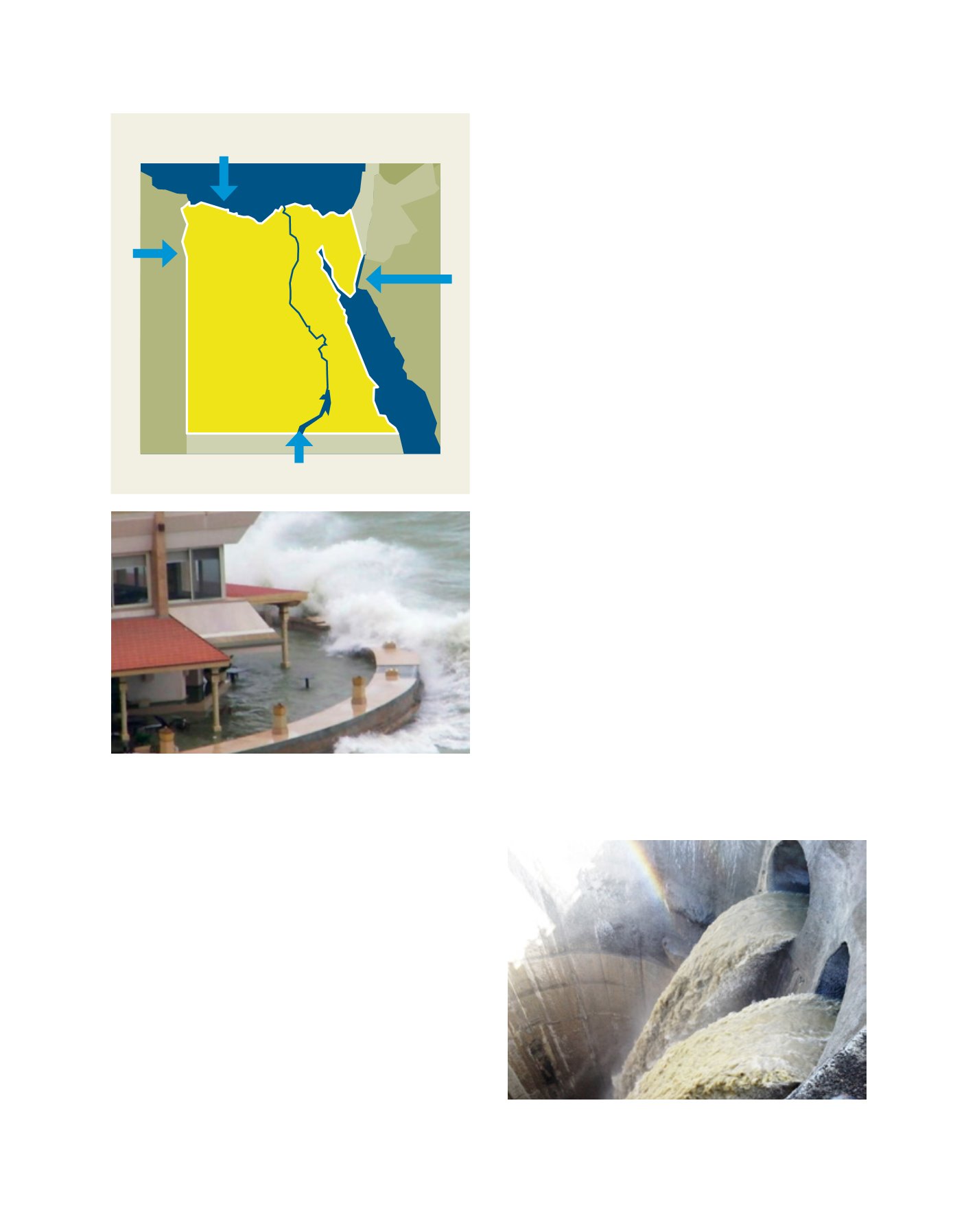

[
] 66
access
to
water
and
sanitation
for
all
percentage could be increased without adaptation. Moreover,
12 to 15 per cent of the most fertile arable land in the Nile
Delta is negatively affected by a rise in sea level and salt
water intrusion, deteriorating ground water quality. Also,
the increase in both seawater temperature and salinity in the
coastal lakes is negatively affecting fish species, with a serious
impact on low-level lands in the delta and the adjacent highly
populated cities such as Alexandria and Port Said.
The impact includes the destruction of weak sections of the
sand belt, inundation of valuable agricultural land, damage
to the ecosystems and communities of the Northern Lakes,
and the endangering of recreational tourism beach facilities.
It is believed that up to 6 million people and 4,500km
2
of
land may be affected, resulting in a more significant chal-
lenge – the migration of people from the affected areas.
Egypt is the furthest downstream of the countries in the
Nile Basin, the most dependent on the basin’s resources and
the most arid. Studies using global and regional climate
models show a high degree of uncertainty regarding the
impact of climate change on the Nile Basin’s precipitation and
runoff. Accordingly, the main objective of Egypt’s National
Strategy for Adaptation to Climate Change and Disaster Risk
Reduction is to increase the flexibility of Egyptian communi-
ties when dealing with the risks and disasters that might be
caused by climate change and its impact on various sectors
and activities. The Ministry of Water Resources and Irrigation
(MWRI), in coordination with all ministries concerned with
the management and use of water, has therefore prepared a
National Water Resources Plan (NWRP) which looks as far
ahead as 2037, and is based on the principle of integrated
water resources management (IWRM).
NWRP 2037 is not the first Egyptian national water
resources plan. MWRI had already developed a plan covering
the period 2005–2017, following the same methodology, and
in full cooperation and coordination with all stakeholders.
With the approach of 2017, it was necessary to develop a new
strategy, with the lessons learned from the implementation
of the first plan used as one of the main inputs. NWRP 2037
will pursue four objectives:
• Improving the enabling environment for IWRM, planning
and implementation
• Increasing the availability of freshwater resources
• Improving water quality
• Enhancing the management of water use.
In addition, the new plan takes into consideration the objec-
tives of Egypt’s Sustainable Development Strategy 2030, and
the latest circumstances surrounding the water sector. As
part of the government’s overall orientation toward decen-
tralisation, the NWRP supports this trend in the water
sector, as well as supporting the required interaction between
public policies and determinants at national level and the
actual needs and priorities at local level. Governorate water
resources plans have been developed in full cooperation and
coordination between the stakeholders at governorate level
in order to support the required interaction.
In the NWRP, several measures are currently being consid-
ered to adapt to a climate change impact on water resources.
These efforts include, but are not limited to: Improving irri-
gation and draining systems; changing cropping patterns
and farm irrigation systems; reducing surface water losses
Sarabium siphon, 60m below ground, built to transfer agricultural drainage
water to the eastern part of the Nile Delta
Extreme events witnessed in Alexandria
Sea level rise
Egypt
River
Nile
Hottest and drier weather
Extreme events
Nile inflow changes
Source: national water resources plan 2017–2037
Impact of climate change on Egypt
Image: MWRI
Image: MWRI
















